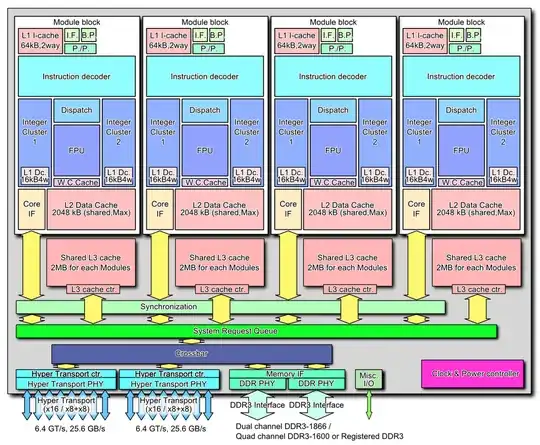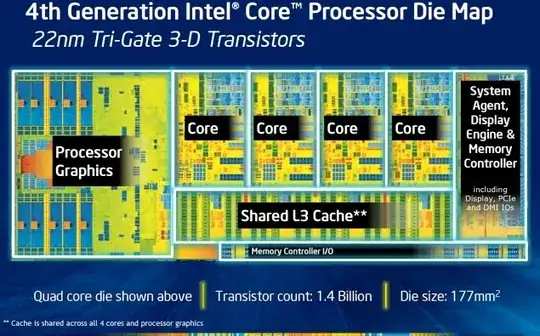So somebody was telling me that an AMD 8 core processor only really has 6 cores as opposed to an Intel having a full 8 cores. Is there any truth to this at all?
2 Answers
I'm pretty sure the person you were talking to had no idea what he was talking about at all.
Now, I'm assuming we're talking about the 'current' earthmoving machinery named AMD cores, and current mainstream (haswell/broadwell) based cores.
Lucky for us, wikipedia has a great image of an AMD Bulldozer core

Notice - One 8 core processor has 4 modules, with a ton of shared bits. Essentially, you can run two integer threads at once, but you have less floating point unit processors. .

Intel on the other hand has 4-8 core processors that do hyperthreading (Standard processors go up to 4. Enthusiast editions go up to 8). Essentially, an intel processor core is functionally similar to a AMD module - it runs two threads, and has a single FPU and a single core which does hyperthreading.
In real world workloads intel tends to be better at single core workloads and AMD is probably better at multithreaded workloads. Intel probably has better floating point performance (but at some point, you're better off throwing that to a gpgpu). However Intel has a massive advantage in other respects - they are head of everyone else in physical design, and their processors are a lot more power efficient.
- 133,878
An AMD 8-core FX (or other Bulldozer/Piledriver/Steamroller/Excavator-architecture) processor actually does have 8 integer processor cores. However, AMD puts pairs of cores into modules, each of which has several shared resources, including an L1 instruction cache, L2 cache, and (relatively large) floating-point unit. As such, an AMD 8-core processor of this type has 4 FPUs. The person you spoke with was most likely alluding to this aspect of the architecture.
In an Intel 8-core processor (and I assume you're talking about the i7-5960X), each core is essentially independent, with separate FPU and L1/L2 caches for each core. An Intel 8-core processor therefore has 8 FPUs, which allows it to perform more floating-point operations per unit of time than the corresponding AMD part. Intel processors also tend to do far more work per clock cycle than AMD processors (e.g. 1 GHz on an Intel Haswell processor is worth far more than 1 GHz on an AMD Piledriver processor).
In addition, most modern Intel processors (since Nehalem, and up to and including Haswell) have a feature called Hyper-Threading (HT), which further increases the amount of work each core can do by presenting two logical cores to the operating system per physical core to further increase performance with heavily threaded workloads. In doing so, the processor makes fuller use of each core's resources. However, despite what the operating system may show, it's not the same as doubling the cores. The processor just utilizes otherwise unused parts of the processor core. A quad-core Intel processor with HT will appear to the operating system as having 8 cores, and an 8-core Intel processor with HT will appear as having 16 cores. It's up to the OS to ensure efficient use of each physical core.
- 46,683